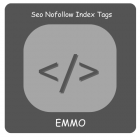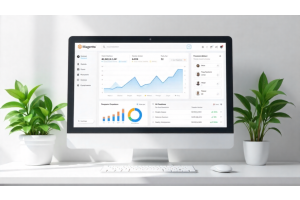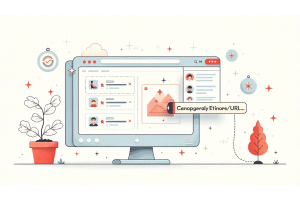Understanding the Value of Dofollow Links for SEO

Understanding the Value of Dofollow Links for SEO
Dofollow links are standard hyperlinks that allow search engine crawlers to follow them from one site to another. These links pass along "link juice" or ranking authority, positively impacting SEO by signaling to search engines that the linked-to site is credible and valuable. Dofollow links differ from nofollow links, which are tagged to tell search engines not to follow or pass ranking authority, typically used for paid or user-generated content.
Table Of Content
What Are Dofollow Links?
A "dofollow link" is a standard hyperlink that passes SEO value, often called “link juice,” from one site to another. Unlike nofollow links, which tell search engines to ignore them for ranking purposes, dofollow links signal endorsement, helping search engines recognize valuable content. Adding a dofollow link is simple: just include a regular anchor tag without any special attributes, like this example:
a href="https://example.com" Example Site/a
Why Dofollow Links Matter for SEO
Dofollow Links
- Pass ranking strength, or "link equity," to the linked site.
- Help improve the search engine ranking of the linked content.
Nofollow Links
- Include the
rel="nofollow"attribute, instructing search engines not to pass link equity. - Useful for linking to sponsored or user-generated content, where endorsement is not intended.
Here’s an example of a nofollow link:
a href="https://example.com" rel="nofollow"Example Site /a
When to Use Dofollow Links
Use dofollow links when:
- Linking to reputable external resources or authoritative sites.
- Citing research, data, or articles relevant to your topic.
- Connecting to your own or trusted social media profiles.
- Sharing reviews, testimonials, or portfolio items that support your brand.
When to Avoid Dofollow Links
For certain content, consider nofollow or other attributes to avoid signaling endorsement:
- Sponsored Content: Add
rel="sponsored"to paid promotions. - User-Generated Content (UGC): Use
rel="ugc"for links from forums or comments. - Affiliate Links: Protect your SEO reputation by adding
rel="sponsored"to these links.
Quick Reference Table
| Link Type | Use Case | SEO Impact |
|---|---|---|
| Dofollow | Reputable sources, internal linking | Passes link equity, boosts ranking |
| Nofollow | Sponsored, affiliate, user-generated content | No link equity, maintains neutral stance |
| noimageindex | Prevents search engines from indexing page images. | No link equity, maintains neutral stance |
| Sponsored | Paid endorsements | No link equity, complies with ad policies |
| UGC (User-Generated Content) | Forums, comments | No link equity, signals non-endorsed content |
Building a Healthy Link Profile
A diverse backlink profile with both dofollow and nofollow links provides SEO benefits and keeps your site aligned with Google’s guidelines. To ensure balance, monitor your link profile with tools like Semrush or Ahrefs to avoid an overreliance on one link type and create a strong, organic foundation for your site’s SEO performance.
Why Do Follow Links Matter for SEO and Website Visibility?
Dofollow links are essential for building backlinks and strengthening your site's internal linking structure, making them key players in SEO. When a trusted site links to yours with a dofollow link, it endorses your content, signaling to search engines that your site is credible. These endorsements, often called link equity, help improve your site's ranking in search results.
Follow links also guide search engines to new content on your site. When you link to new pages from existing content, follow links create pathways for search engine crawlers to locate and index your content faster, increasing your visibility in search results.
Key Benefits of Dofollow Links for SEO
| Benefit | Description |
|---|---|
| Boosts Authority | Follow links from reputable sites signal credibility, boosting your site's authority. |
| Improves Search Ranking | Dofollow links contribute to a higher search engine ranking by passing link equity to your site. |
| Enhances Indexing Speed | Follow links help search engines find and index new content more quickly. |
| Supports Internal Linking | Internally linking with dofollow tags improves user experience and helps with content discoverability. |
When to Use Dofollow Links
Use dofollow links strategically for both external and internal linking in these cases:
- Linking to High-Quality External Resources: Link to reputable sources to provide readers with credible information.
- Citing Original Data or Research: When referencing studies, data, or expert content, use dofollow links to support credibility.
- Linking to Additional Resources: Guide readers to reliable external content or in-depth information.
- Directing to Social Profiles: Link to your official social media pages to enhance brand recognition.
- Highlighting Testimonials or Reviews: Link to verified testimonials to show product or service credibility.
Understanding When to Choose Nofollow Over Dofollow
Dofollow links are the default type, passing “link juice” and contributing to SEO by endorsing the site they lead to. However, there are specific cases where it’s better to avoid using dofollow links to maintain a healthy link profile, support compliance, and prevent potential penalties.
When to Use Nofollow, Sponsored, or UGC Attributes Instead of Dofollow
Using the appropriate link attribute can protect your site’s reputation and ensure your link profile remains SEO-friendly. Here’s a breakdown of when to avoid dofollow links and opt for nofollow, sponsored, or UGC attributes:
- Sponsored Content: For paid content, including sponsored posts or ads, use rel="sponsored" to signal that the link is part of a commercial relationship. This indicates transparency to search engines, keeping your site compliant with guidelines.
- User-Generated Content (UGC): Links in comments, forums, and other user-contributed sections should use rel="ugc" to show they are user-generated and not fully endorsed by your site.
- Low-Quality or Untrusted Websites: Avoid dofollow links when linking to sites that might lack authority or trustworthiness. Dofollow links signal endorsement, so linking to low-quality content can negatively impact your SEO.
- Affiliate Links: Affiliate links should include the rel="sponsored" attribute, as these are often part of commercial arrangements. This signals to search engines that the link doesn’t represent a natural endorsement.
Balancing Dofollow and Nofollow Links for SEO
A balanced link profile is essential; most SEO experts recommend maintaining a mix, such as 75% dofollow to 25% nofollow links, though this varies based on your site's nature. Overusing dofollow links, especially to low-quality sites, can appear manipulative and harm your rankings. Conversely, an overuse of nofollow links can signal caution to search engines, which might affect link equity flow.
Summary Table
| Summary Table | Attribute Used | When to Use |
|---|---|---|
| Sponsored Content | rel="sponsored" |
For all paid or sponsored content |
| User-Generated | rel="ugc" |
For comments, forums, or user-submitted content |
| noimageindex | Prevents search engines from indexing page images. | Prevents search engines from indexing page images. |
| Untrusted Sites | rel="nofollow" |
For sites lacking authority or relevance |
| Affiliate Links | rel="sponsored" |
For commercial partnerships or affiliate links |
Regularly review and adjust your linking strategy to keep a balanced, authoritative link profile. This approach supports SEO efforts while building a transparent and trusted site for both users and search engines.
How to Verify if Your Backlinks are DoFollow Links
High-quality DoFollow backlinks are essential for improving your search rankings. Ensuring that these backlinks pass SEO value to your site helps enhance authority and visibility. Below, you’ll find a straightforward approach to identifying whether your backlinks are DoFollow, with helpful tools and tips for efficient checking.
Step 1: Manually Inspect the Backlink Code
Open the Page Containing the Backlink
- Visit the webpage where your backlink is located.
Use the Inspect Tool
- Right-click the link and select "Inspect" from the dropdown to open the HTML code for the link.
Check for DoFollow Attributes
- If the HTML code for the link appears as
a href="your-url"anchor text, without a rel attribute, it’s a DoFollow link. - Non-DoFollow Attributes: If you see
rel="nofollow", rel="sponsored", or rel="ugc",the link does not pass SEO value to your site.
Step 2: Use SEO Tools to Confirm Link Attributes
If you need to check multiple backlinks quickly, SEO tools can streamline this process.
Semrush Backlink Analytics
- Log in to Semrush.
- Enter your website’s URL in the Backlink Analytics tool, then click Analyze.
- In the “Backlinks” tab, use the filters to sort links by type, including DoFollow, NoFollow, sponsored, and UGC (User-Generated Content) attributes.
Ahrefs Site Explorer
- Go to Ahrefs and input your website’s URL.
- Select the Backlinks tab, where you can view a breakdown of DoFollow vs. NoFollow links.
- Use the filter options to display DoFollow links only, or analyze all links with various rel attributes.
Google Search Console
- Access Google Search Console for a free but limited backlink report.
- Navigate to Links > Top Linking Sites for a high-level view of your inbound links. However, Google Search Console doesn’t display link attributes, so this tool is best for tracking linking domains rather than DoFollow status.
Summary Table for Backlink Checking Tools
| Tool | Functionality | Cost |
|---|---|---|
| Semrush | DoFollow/Nofollow filter, full analytics | Subscription |
| Ahrefs | Link type filters, domain authority metrics | Subscription |
| Google Search Console | Linking domains view, free option | Free |
FAQs
What Are Dofollow Links?
Dofollow links are standard hyperlinks that transfer SEO value, or "link juice," from one site to another. Unlike nofollow links, which prevent the transfer of ranking influence, dofollow links signal endorsement, which helps search engines understand the content’s credibility. A dofollow link is created with a simple anchor tag without any rel attributes:
<a href="https://example.com">Example Site</a>
Why Are Dofollow Links Important for SEO?
Dofollow links are crucial because they pass ranking strength (or "link equity") to the linked site, which helps improve its search engine ranking. Unlike nofollow links, dofollow links boost SEO by showing endorsement from the referring site, which increases visibility and credibility.
When Should I Use Dofollow Links?
Use dofollow links for:
- Linking to reputable and credible external sources.
- Citing original data or studies relevant to your topic.
- Directing to your verified social media profiles.
- Showcasing reviews or testimonials to boost trust in your brand.
When Should I Avoid Dofollow Links?
Avoid dofollow links for content like sponsored posts, user-generated content, or affiliate links, as they may signal undesired endorsements. Use alternative link attributes such as rel="nofollow" or rel="sponsored" for transparency and compliance with SEO best practices.
What is the Difference Between Dofollow and Nofollow Links?
| Link Type | Usage | SEO Impact |
|---|---|---|
| Dofollow | Credible external links, internal linking | Passes link equity, improves ranking |
| Nofollow | Sponsored, user-generated, untrusted links | Does not pass link equity, maintains neutrality |
| Sponsored | Paid or promotional links | Does not pass link equity, adheres to ad guidelines |
| UGC (User-Generated Content) | Comments, forums | Does not pass link equity, signals non-endorsement |
How Can I Check if My Backlinks Are Dofollow?
To check if a backlink is dofollow, right-click on the link, select "Inspect," and check for the rel attribute. If the HTML code for the link does not contain rel="nofollow", rel="sponsored", or rel="ugc", it’s likely a dofollow link.
Which Tools Help Identify Dofollow Links?
SEO tools like Semrush, Ahrefs, and Google Search Console can identify and filter dofollow and nofollow links:
- Semrush Backlink Analytics: Analyze your site’s links and filter by attribute.
- Ahrefs Site Explorer: View and filter backlinks by dofollow or nofollow attributes.
- Google Search Console: Provides backlink data but does not specify link attributes.
Why Balance Dofollow and Nofollow Links?
Maintaining a mix of dofollow and nofollow links supports a healthy link profile. A balanced ratio helps prevent potential penalties and maintains credibility by avoiding an overuse of any one link type. Regularly monitor your link profile with tools like Semrush to ensure diversity.









